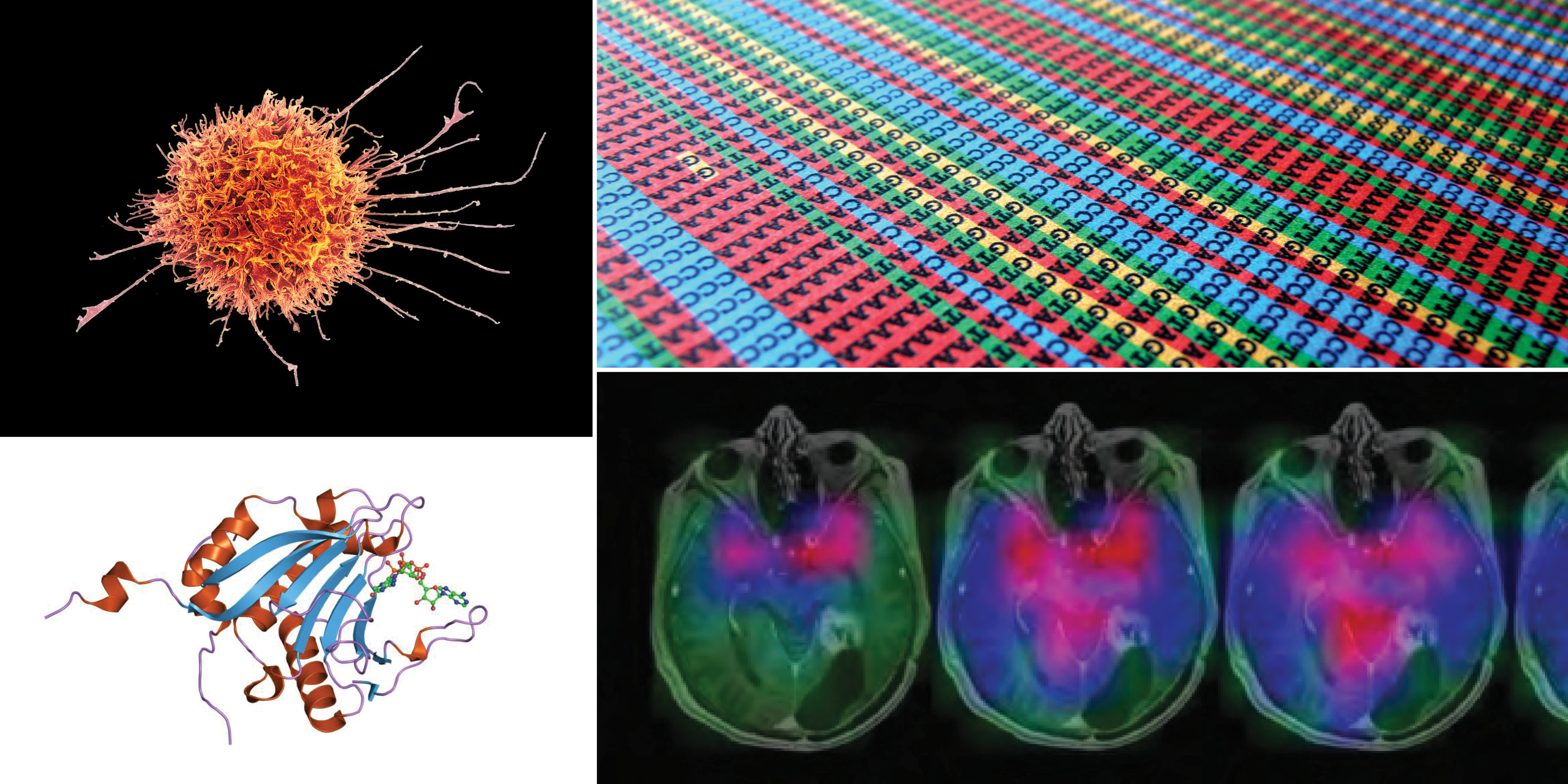
With SPORE Funding Renewed, Four Projects Take Center Stage

In September of 2018, the UCSF Department of Neurological Surgery successfully secured a Specialized Program of Research Excellence (SPORE) grant to advance our efforts in brain tumor research. This award totals nearly $12.5 million over the course of five years.
Conceived and implemented by the National Cancer Institute since 1992, SPOREs are intended to promote translational research focused on an organ-specific human cancer.
Following a highly competitive review process, UCSF was one of six institutions to be awarded a prestigious Brain Tumor SPORE. We are the only institution to have been continuously funded since Brain Tumor SPOREs were first established in 2002.
Our current SPORE grant supports four translational research projects, all focused on improving the diagnosis and treatment of brain tumors, with a particular emphasis on therapeutic strategies to improve outcomes for patients with glioblastoma (GBM), one of the most aggressive types of primary brain tumor.

The first project uses a new methodology developed at UCSF called immunomethylomics to identify the distribution of immune cells that accumulate in the peripheral blood of patients with GBM. By using this metholodogy to assess patients’ immune status throughout diagnosis and treatment, our team aims to help clinicians better understand prognoses, avoid unnecessary interventions, and aid clinical decision making. This team is led by John Wiencke, PhD, Annette Molinaro, PhD, and Jennifer Clarke, MD.
The second project will investigate a promising medical imaging technology called hyperpolarized C-13 MRI. Hyperpolarized C-13 imaging is a type of metabolic imaging that provides information about dynamic changes in tumor metabolism, for example in response to treatment. The hope is that hyperpolarized C-13 imaging could help clinicians more rapidly determine how well a treatment is working, by tracking early changes in metabolism at the tumor site. Our team will focus their efforts on combining hyperpolarized C-13 imaging with a more established imaging modality to evaluate treatment response in patients with GBM. These efforts are led by Sarah Nelson, PhD and Susan Chang, MD.
The third project aims to develop a new therapeutic target for gliomas. This work is based on the observation that more than 80 percent of GBM and oligodendroglioma contain mutations in the TERT promoter region. Our team recently discovered that a protein called GABP binds to the mutant TERT promoter, and may be targeted to initiate tumor cell death. This project is led by Mitchel Berger, MD and Joseph Costello, PhD.
The final project seeks to develop a new class of drugs to treat patients with GBM. Our team has identified the protein 4EBP1 as a potential target, and shown that a new class of 4EBP1 inhibitor drugs improves survival in preclinical animal models of GBM. This project is led by William Weiss, MD, PhD and Nicholas Butowski, MD.
The four projects are supported by three Cores: Biostatistics and Clinical Core (Leaders: Annette Molinaro, PhD, Susan Chang, MD); Administrative Core (Leads: Mitchel Berger, MD, Joseph Costello, PhD, Susan Chang, MD); Biospecimen/Pathology Core (Lead: Joanna Phillips, MD, PhD).
With SPORE funding from the NCI, our team of clinicians and researchers will continue building on our efforts towards improved therapies and outcomes for patients with GBM and other brain tumors.